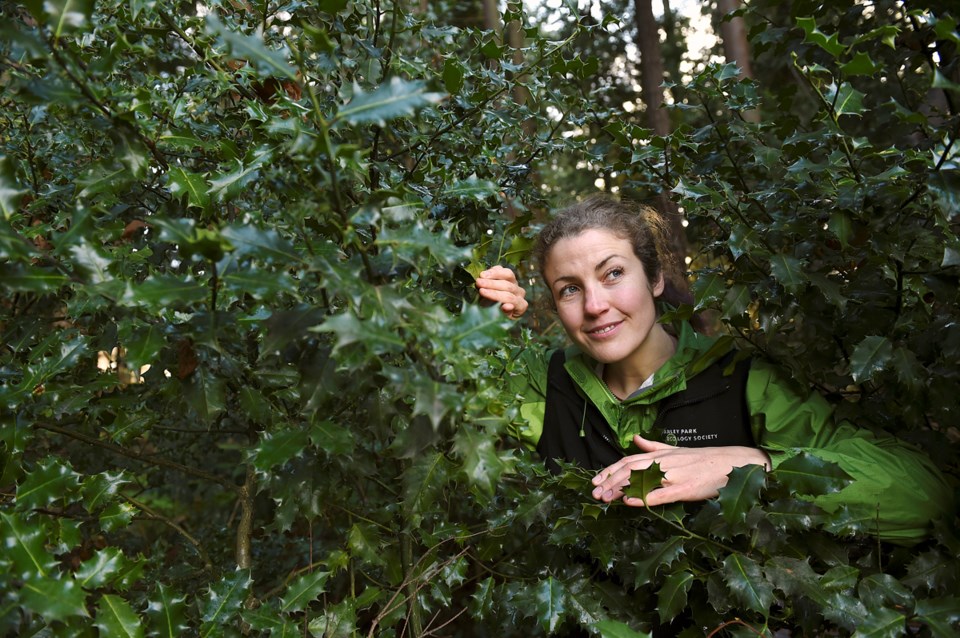On Sunday, a few resolute Vancouverites will trudge into the woods of Stanley Park, rain or shine but probably rain, and reflect on the ecological roots of some cultural traditions we take for granted at this time of year.
A great many of the traditions we see this time of year â Christmas trees, wreathes, red and green decorations â have their roots not in Christian tradition, as we might assume, but in a predecessor, the European pagan rites that predate the religions we know best today. And those echoes are most evident at the winter solstice.
Even in our industrial world with electric lights, we can still feel the effects of the long, dark nights and short dreary days. Imagine a time when the natural world completely dictated the rhythms of daily life. Imagine walking through the damp deciduous forests of ancient Europe, trees and flowers in hibernation, all signs of life in abeyance. And then a holly bush appears. Not only one of the rare evergreens but one merrily sporting gleaming red berries even in darkest December.
âEven the bark is green,â says Celina Starnes, public education and outreach manager for the Stanley Park Ecology Society, which is offering its annual solstice walk. âAnd itâs standing lush and alive amid all these dead-looking trees around it⦠when people saw that, it gave them hope. The greenery, the life, will return to the earth again.â
Could the holly tree be the basis for the entire holiday-season colour palette?
âI donât know for sure, but that whole Christmas red-green thing,â she says. âIt probably has something to do with it.â
On the walk, participants will also see mistletoe. Although the type we have in these parts doesnât look like the kind our ancestors in Europe knew, it is of the same family.
âItâs such a bizarre little plant,â says Starnes. âItâs this parasitic plant growing on a tree thatâs dormant for the winter and it will grow these leaves in this tight little bundle and if you see in the picture of mistletoe, a bundle of green and the little white fruit on it, itâs speaking of life and hope in the dead of winter.â But why kiss under it, I ask. Starnes laughs. Itâs obvious: Like a fresh growth of green on a dead or dormant tree, new human life often begins with a kiss. (Never mind, she adds, that forestry people hate mistletoe because eventually it can kill the tree. Not sure where to take the analogy from there.)
The overarching theme of solstice (and the walk) is celebrating rebirth.
âPart of the walk that I really, really like is weâll walk past a tree âthe tree was one of thousands of trees that fell during the windstorm â and youâll see new shoots growing up from this fallen tree,â says Starnes. âItâs just this reminder, in the dead of winter, of the promise of new life.â
Do I need to point out that this theme of monumental birth is probably why Christmas is celebrated at this time of year, even though historians, astronomers and others have concluded that Jesus was likely not born in December? Shepherds would not have been watching their flocks by night during winter, for one thing. Christmas almost certainly got tagged onto pagan solstice celebrations and many of the accoutrements were usurped.
Some of the people most vigilant about âkeeping Christ in Christmasâ are among those re-enacting what is perhaps the most pagan ritual imaginable: hauling a tree into the house and decorating it in colourful ornaments and lights. As I wrote last Christmas, there are some who say the triangular shape of the tree represents the holy trinity, which in turn represents for me one of the great things about our society: being allowed to believe whatever you want.
âThe whole tradition of the candles and all the lights, begging the sun to come back in the days to get longer⦠the day will lengthen again and weâll have light again. Back in the day in Europe, this is what people were faced with, itâs cold, itâs miserable and scary.â
If the Â鶹´«Ã½Ó³»weather lives up to its name, participants in the walk Sunday should get a hint of what the ancients may have felt like in the formidable winter forest, including the spirit-lifting discovery of fresh greens and maybe reds. Preregistration ($5 members/ $10 non-members) is recommended at stanleyparkecology.ca. The walk, from 1:30 to 3:30 p.m., will be leisurely and not at all strenuous, Starnes assures me.
@Pat604Johnson



